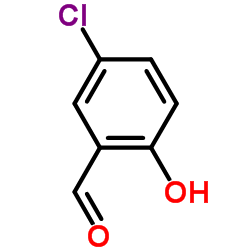New ruthenium(II) carbonyl complexes bearing disulfide Schiff base ligands and their applications as catalyst for some organic transformations.
Govindan Prakash, Periasamy Viswanathamurthi
Index: Spectrochim. Acta. A. Mol. Biomol. Spectrosc. 129 , 352-8, (2014)
Full Text: HTML
Abstract
Schiff base disulfide ligands (H2L(1-6)) were synthesized from the condensation of cystamine with salicylaldehyde(H2L(1)), 5-chlorosalicylaldehyde(H2L(2)), o-vanillin(H2L(3)), 2-hydroxyacetophenone(H2L(4)), 3-methyl-2-hydroxyacetophenone(H2L(5)), and 2-hydroxy-1-naphthaldehyde(H2L(6)). H2L(1-6) reacts with the ruthenium precursor complex [RuHCl(CO)(PPh3)3] in benzene giving rise to six new ruthenium(II) complexes of general formula [Ru(CO)L(1-6)]. Characterization of the new complexes was carried out by using elemental and spectral (IR, UV-Vis, NMR ((1)H and (13)C) and Mass) techniques. An octahedral geometry was assigned for all the complexes based on the spectral data obtained. The catalytic efficiency of the new complexes in aldehyde to amide conversion in the presence of NaHCO3, N-alkylation of aniline in the presence of t-BuOK, and transfer hydrogenation of ketones in the presence of iPrOH/KOH reactions were studied. Furthermore, the effect of solvents and catalyst/substrate ratio on the catalytic aldehyde to amide conversion were also discussed. Copyright © 2014 Elsevier B.V. All rights reserved.
Related Compounds
| Structure | Name/CAS No. | Molecular Formula | Articles |
|---|---|---|---|
 |
5-Chloro-2-hydroxybenzaldehyde
CAS:635-93-8 |
C7H5ClO2 |
|
Palladium(0)-mediated C-H bond activation of N-(naphthyl)sal...
2015-08-14 [Dalton Trans. 44 , 13615-32, (2015)] |
|
Structural, spectroscopic and DFT study of 4-methoxybenzohyd...
2015-02-25 [Spectrochim. Acta. A. Mol. Biomol. Spectrosc. 137 , 692-700, (2015)] |
|
A planar Schiff base platinum(II) complex: crystal structure...
2014-01-01 [Chem. Pharm. Bull. 62(3) , 221-8, (2014)] |
|
Sensitive and selective fluorescence determination of trace ...
2008-09-05 [Anal. Chim. Acta 625(1) , 41-6, (2008)] |